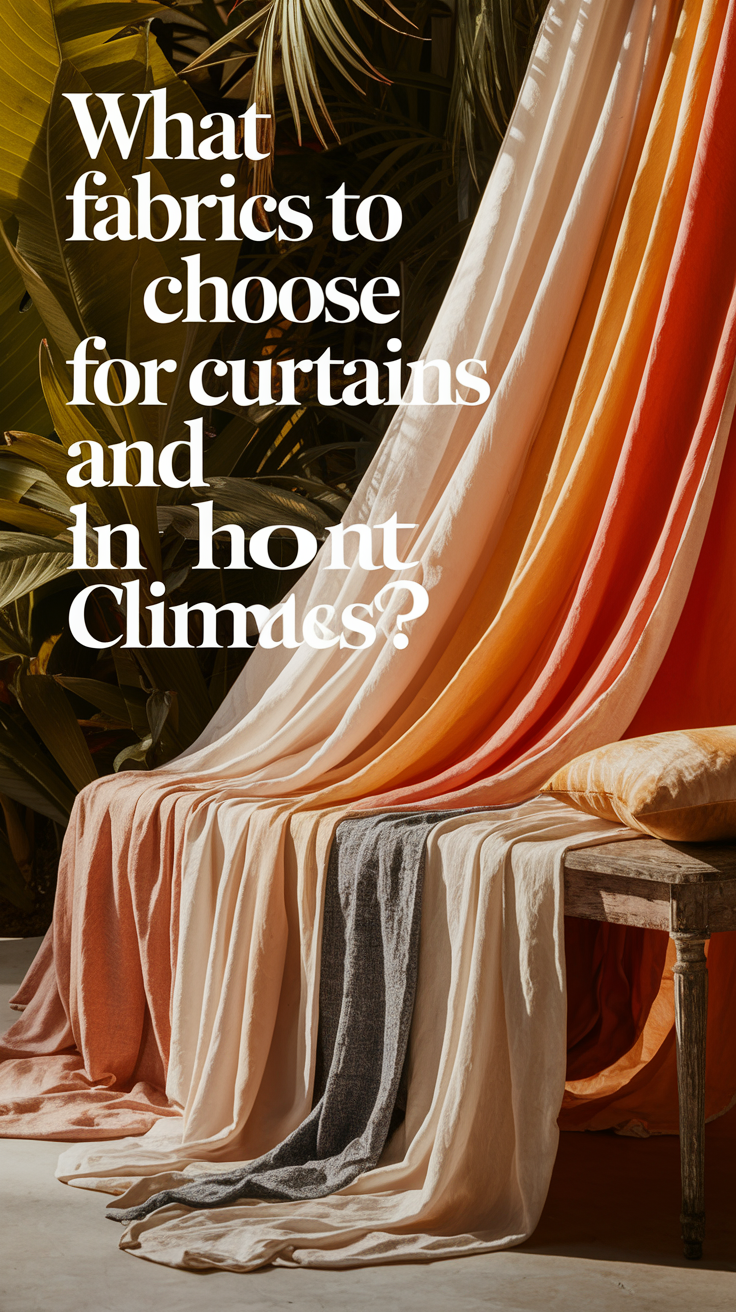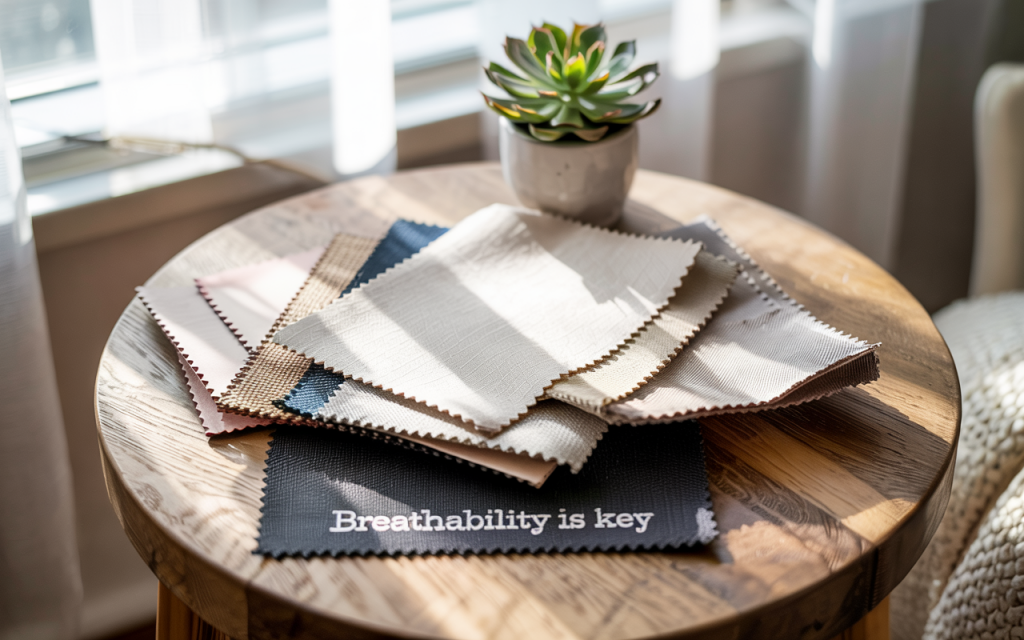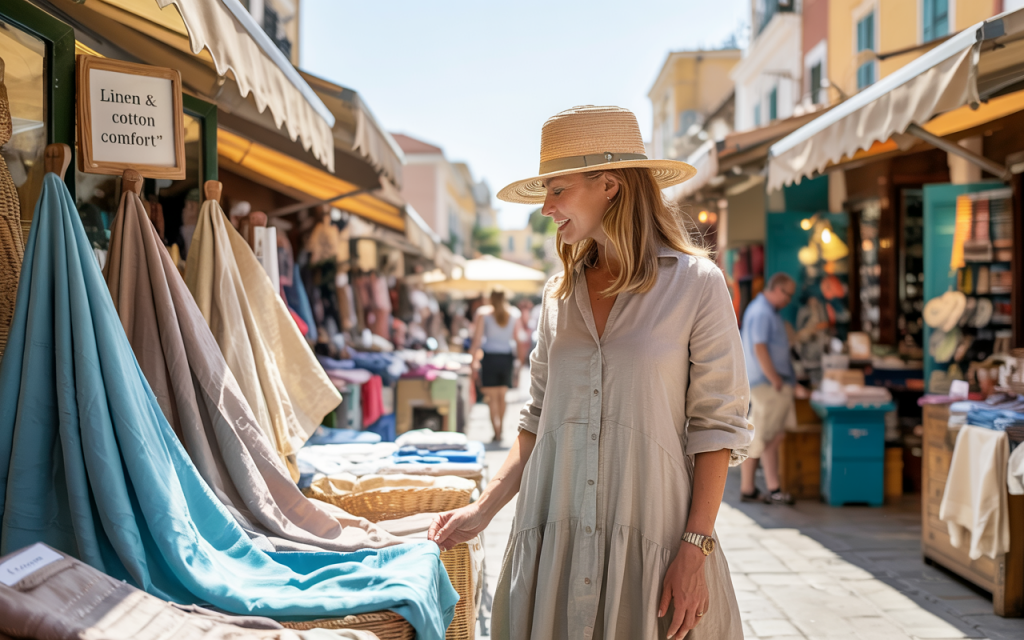What fabrics to choose for curtains and pillows in hot climates in 2025?

Why Selecting The Right Fabric is Most Important During Hot Weather
What if I told you the wrong fabric could increase your home temperature by 5 degrees? In areas where summers last for a long period and the heat is sweltering, small things like the fabric that is used for curtains or pillows makes a significant difference with regard to how cool and comfortable the home feels.
There is a prediction that in 2025 there would be an increase in the number of people trying to find energy-efficient and ecosystem-friendly ways to maintain the comfort inside the buildings. Because of this, selecting the appropriate materials for curtains and pillows in hot regions is more critical than ever.
The goal of this blog is to outline what materials have the best performance and aesthetics for warm weather. So, we will be discussing breathable textiles, analyzing their popularity and their available options, as well as providing expert recommendations to help design smart and stylish decisions for your space.
Who is this text directed toward? If you are someone who lives in a hot region, you are renting an apartment equipped with sunlit windows, or simply want to cut back on your energy bills during summer, this guide will provide valuable insights.

Importance of Pillows and Curtains During Hot Weather.
As mundane and simple as curtains and pillows may seem, they critically affect thermal comfort, light control, as well as sleep quality in hot regions.
Curtains can help filter out and block sunlight and reduce heat gain. The right type of fabric can reduce harsh sunlight, keeping interiors cooler. Surprisingly, pillows can also control how heat is captured or released.
Are you wondering if your current setup enhances or disrupts your comfort? Continue reading.
What Makes a Fabric Heat-Friendly?
Breathability Is Key
While some fabrics capture heat, others, like linen, cotton, and bamboo, allow ventilation and airflow which helps expel heat. Unlike synthetics such as polyester or nylon, these natural fibers can cool down the skin due to wicking moisture.
Color and Texture Matter
Light colored fabrics capture sunlight while dark ones absorb it. Smooth textures tend to have higher heat reflected off them whereas plush and heavy textures will entrap warmth.
UV Resistance and Durability
UV rays can damage and fade fabrics over time. It’s best to use UV resistant or naturally resistant fabrics, such as linen, to protect them in sunny conditions.
Best Fabrics for Curtains in Hot Climates
Linen: A Cool and Classic Choice
Linen is one of the best materials to use because it slims down beautifully while providing excellent air circulation and filtering intense light. Linen is also beautifully draped adding an elegant, yet relaxed and timeless style.
Pros: Light-weight, Low-eco impact, and more.
Cons: Expensive, Settle Wrinkles.
Cotton: Versatile and Breathable
Cotton curtains are another wonderful option because they are beautifully soft, inexpensive, and comes in a variety of styles. They are most effective when layered or lined with reflective backings as well.
Pros: Soft, Effortlessly washed.
Cons: Shrink after washes, Requires lining.
Linen-Cotton Blends: Balanced and Practical
This blend fabric has increased performance for natural fabrics as the cotton placed into the stitch polyester insures that the end product turns out strong with good shape retention and the softness needed by the customer.
Pros: Lower than pure linen, Balanced performance.
Cons: Restricted Breathability depending on ratio.

Best Fabrics for Pillows in Hot Climates
Cotton and Linen Covers
Using various raw materials to decorate the pillow gives a raw touch that lowers the skin temperature, guaranteeing numerous natural advantages. Covers made of cotton/linen stay cool to the touch while names turn into moisture.
Muslin, Waffle Weave, and Chambray
These thinner fabrics are fashionable come 2025 and provide minimal bulk in hot climates. These materials are made for summer-centric designs.
Avoid Thick Weaves, Fleece, And Velvet Fabrics
Plush fabrics and thick weaves trap heat and are very uncomfortable in warm climates. It is best to save these thick fabrics for fall and winter.
Fabric Comparison Table: Ideal Choices for the Heat
| Fabric Type | Care Needs | Texture | UV Resistance | Breathability |
|---|---|---|---|---|
| Linen | Moderate (Wrinkles) | Light/Crisp | High | Excellent |
| Cotton | Easy (Shrinks) | Soft | Moderate | Good |
| Linen-Cotton Blend | Easy | Smooth | Moderate-High | Good |
| Bamboo | Moderate | Silky | Moderate | Excellent |
| Polyester | Easy | Heavy | Low | Poor |
Textiles Design Trends for 2025 That Keep You Stylish Wtih UV Protection
sustainable fabrics are the new luxurious items to have
Fashion doesn’t come at the cost of personal beliefs when it comes to organic cotton, ethically grown linen, and bamboo blends tops the list of beautifully stylish and eco-friendly.
sandy beige, seafoam green, and coastal cool blue
These trending colors reflect an overall sense of calm and heat instead of being absorbed by the wearer unlike warm tones.
Lightweight Muslin and Open Weaves
Crushed linen offers a breezy touch that perfectly aligns with fabrics that offer superior heat resistance.
Choose between style and comfort? Not so in 2025.
Styling Tips: Curtains and Pillows Coordination for Max Visual Appeal
- Look for Contrasts: If your curtains are made from heavy linen, then your pillows should be made from lightweight chambray or cotton.
- Layered Designs: Use lighter sheers behind slightly heavier panels to control for light.
- Monochrome or toned colors help maintain a cooler appearance for the overall area.
Got stuck picking the right combo? Picture your space basking in natural light any time of the day.
Designer Recommendations For Homes Located In Hotter Climates
- Opt for linings that block UV rays to prevent fading for pillows.
- To keep pillow fresh and free from sweat, wash and rotate the pillow covers every week.
- For a more “feel-good” experience, choose fabrics that boost energy efficiency.
In Conclusion: What Would You Prefer As The Best Textiles Choice?
To keep the space looking stylish, use curtain and pillow textiles that are breathable. Focus on sustaining the room during hot weather by using lightweight natural materials. Avoid heavy sluggish fabrics and stick to light colors with airy textures.

Summary:
- In warm regions, linen and cotton are ideal.
- Blended fabrics could help, but pay attention to the ratio of fibers used.
- Strategy Design light aspects like colors; they influence temperature.
- Stay smart and relish both comfort and style.
Now it’s your turn: What fabrics help you stay cool in your home? Leave comments with your favorites or questions!
